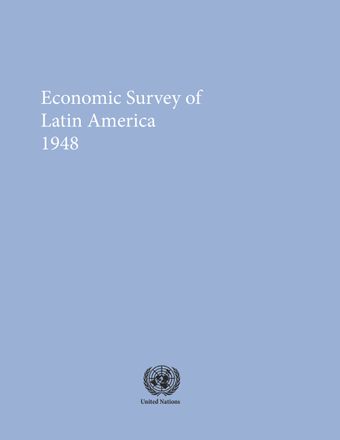Latin America and European Recovery

- Author: Economic Commission for Latin America and the Caribbean
- Main Title: Economic Survey of Latin America 1948 , pp 247-260
- Publication Date: December 1948
- DOI: https://doi.org/10.18356/eec1078f-en
- Language: English
Mineral-producing countries, tropical agricultural countries and non-tropical agricultural countries2 participated in the total foreign trade of Latin America in the years 1928, 1935 and 1938 in the following proportions: mineral-producing, 26, 32 and 37 per cent; tropical agricultural, 37, 37 and 36 per cent; non-tropical agricultural, 37, 31 and 27 per cent. The third group had traditionally relied on a large export surplus to both continental and non-continental Europe to equilibrate its international accounts and, especially, to neutralize an almost continuous deficit with the United States. The second group had a fairly permanent, large export surplus with the United States, a less important export surplus with western continental Europe, and a very small export surplus with the United Kingdom and eastern European countries. The Latin-American mineral producing countries alternated between an export surplus and an import surplus with the United States during most of the 1930’s; with regard to Europe, this group formerly had a relatively significant export surplus with the United Kingdom, as well as with the continental European countries. Trade relations of the three groups with the rest of the world (excluding intra-Latin-American trade) were in general of little importance—amounting to less than 5 per cent of total Latin-American foreign trade—and resulted in an export surplus only to the mineral producing countries.
-
From This Site
/content/books/9789210583053s004-c006dcterms_title,dcterms_subject,pub_keyword-contentType:Journal -contentType:Contributor -contentType:Concept -contentType:Institution105



